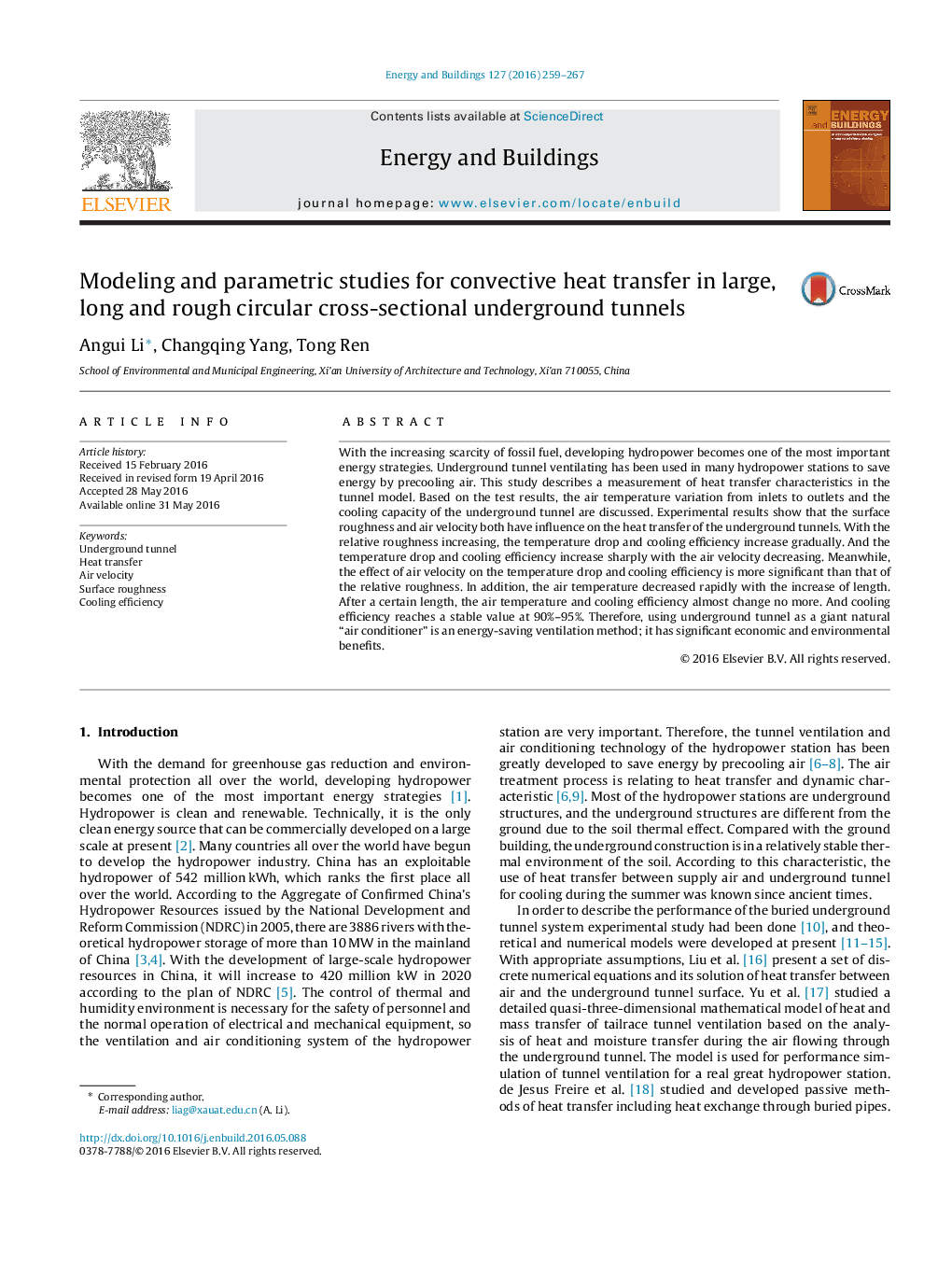| Article ID | Journal | Published Year | Pages | File Type |
|---|---|---|---|---|
| 261980 | Energy and Buildings | 2016 | 9 Pages |
•Tests under different surface roughness of underground tunnel model were conducted.•The effect of air velocity and the relative roughness on the heat transfer in the underground tunnels was analyzed.•The study can offer advice for cooling efficiency prediction and effective ventilation design in similar underground spaces.
With the increasing scarcity of fossil fuel, developing hydropower becomes one of the most important energy strategies. Underground tunnel ventilating has been used in many hydropower stations to save energy by precooling air. This study describes a measurement of heat transfer characteristics in the tunnel model. Based on the test results, the air temperature variation from inlets to outlets and the cooling capacity of the underground tunnel are discussed. Experimental results show that the surface roughness and air velocity both have influence on the heat transfer of the underground tunnels. With the relative roughness increasing, the temperature drop and cooling efficiency increase gradually. And the temperature drop and cooling efficiency increase sharply with the air velocity decreasing. Meanwhile, the effect of air velocity on the temperature drop and cooling efficiency is more significant than that of the relative roughness. In addition, the air temperature decreased rapidly with the increase of length. After a certain length, the air temperature and cooling efficiency almost change no more. And cooling efficiency reaches a stable value at 90%–95%. Therefore, using underground tunnel as a giant natural “air conditioner” is an energy-saving ventilation method; it has significant economic and environmental benefits.
